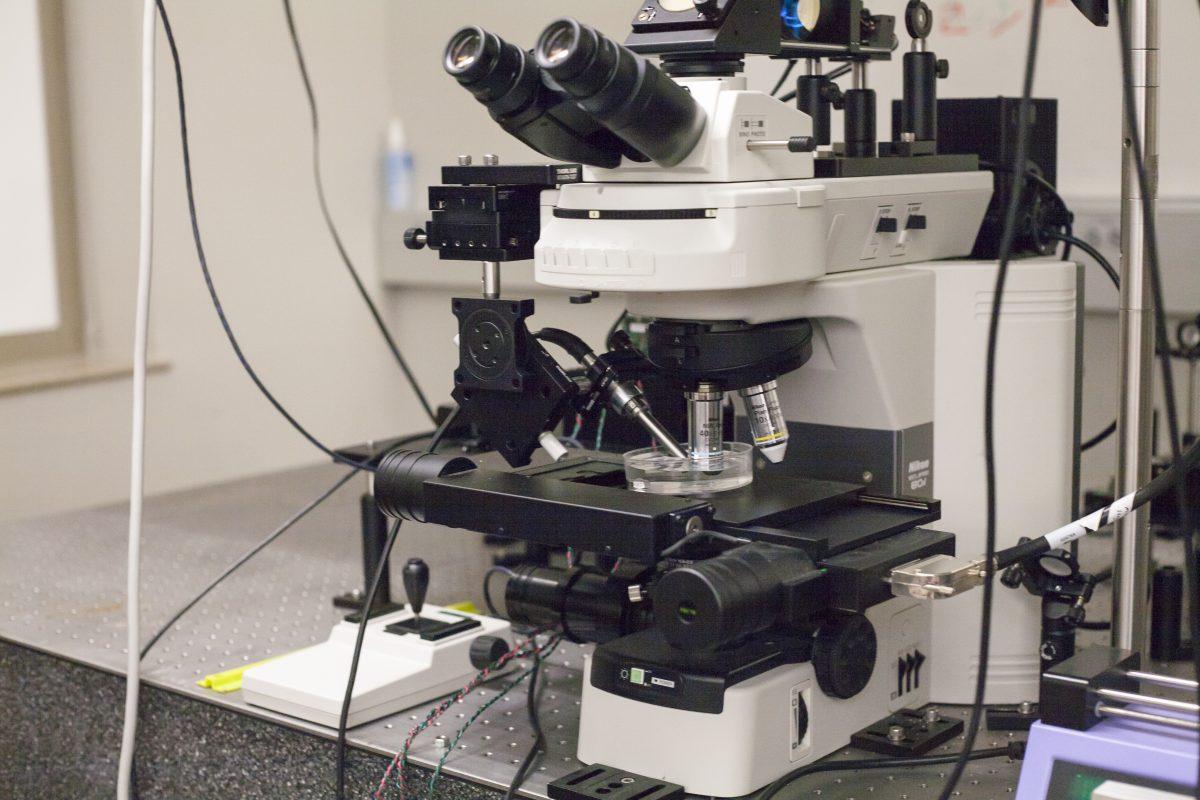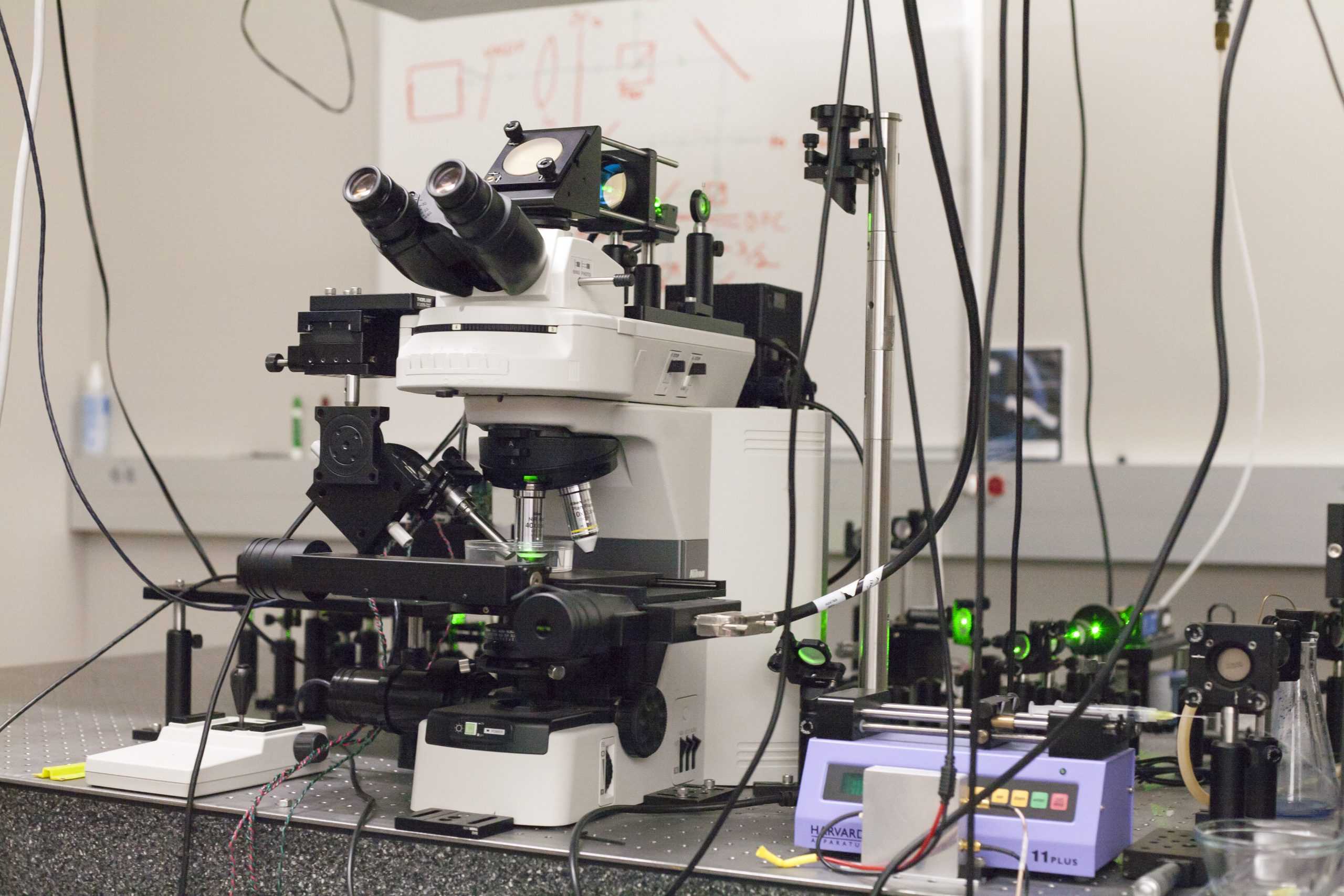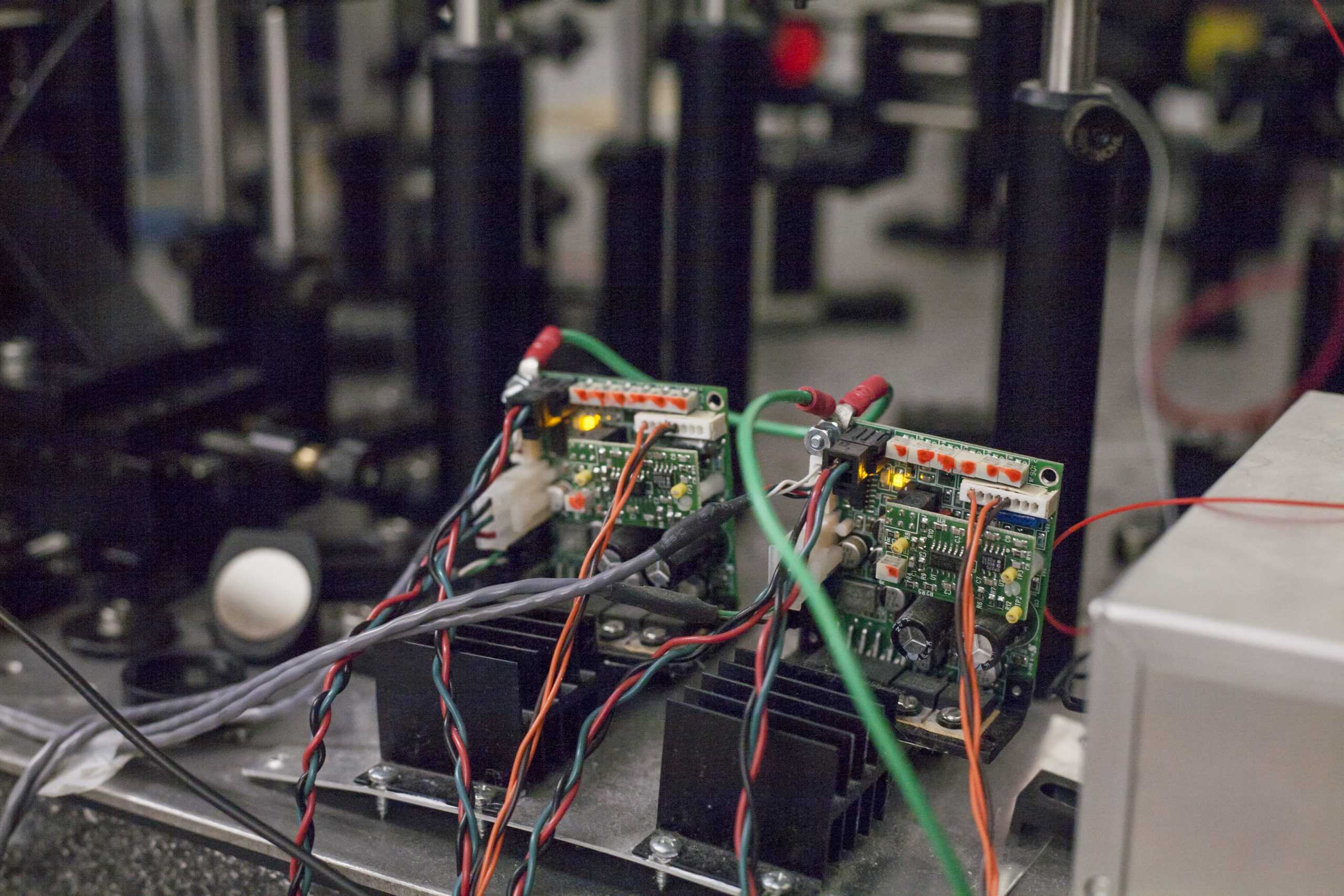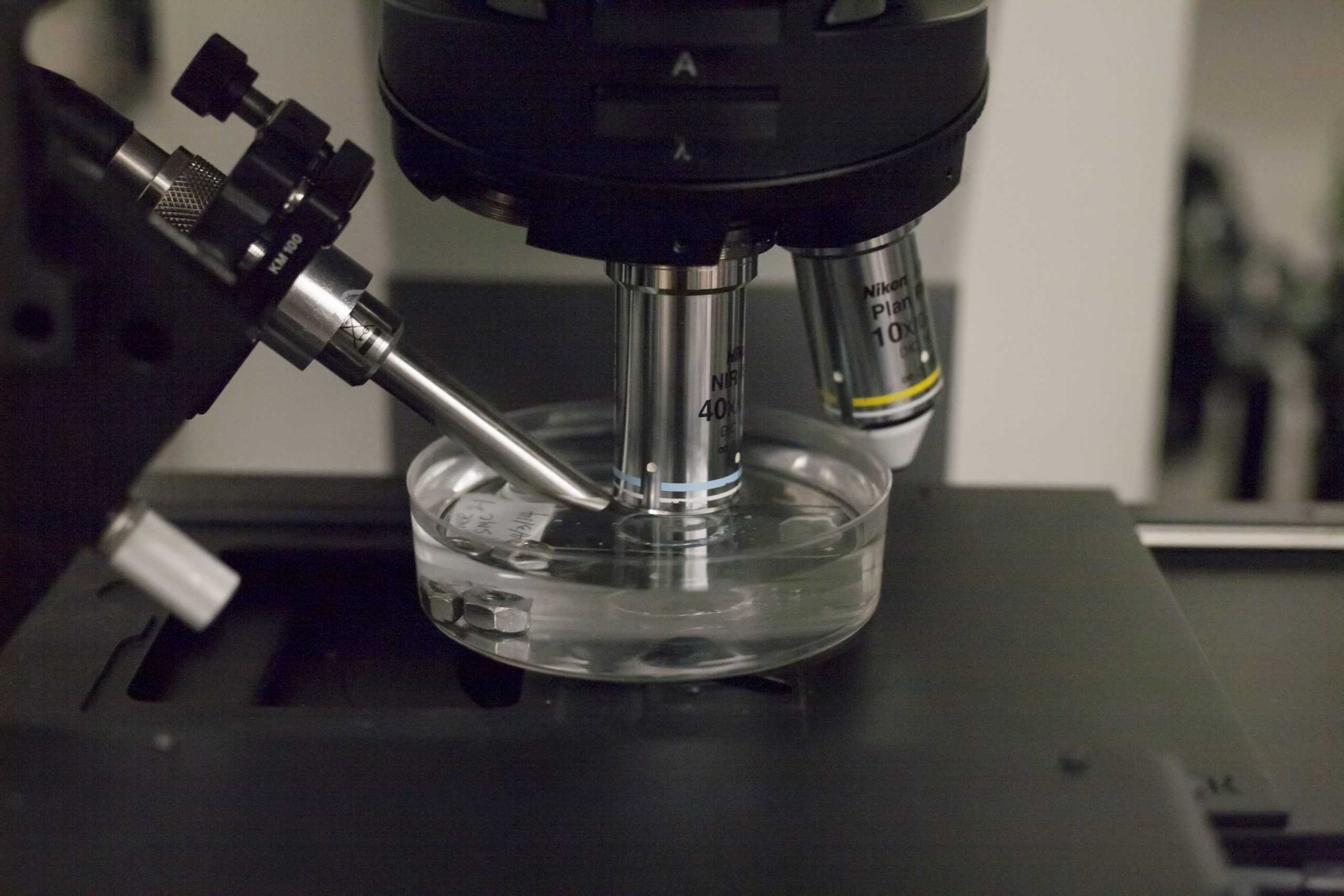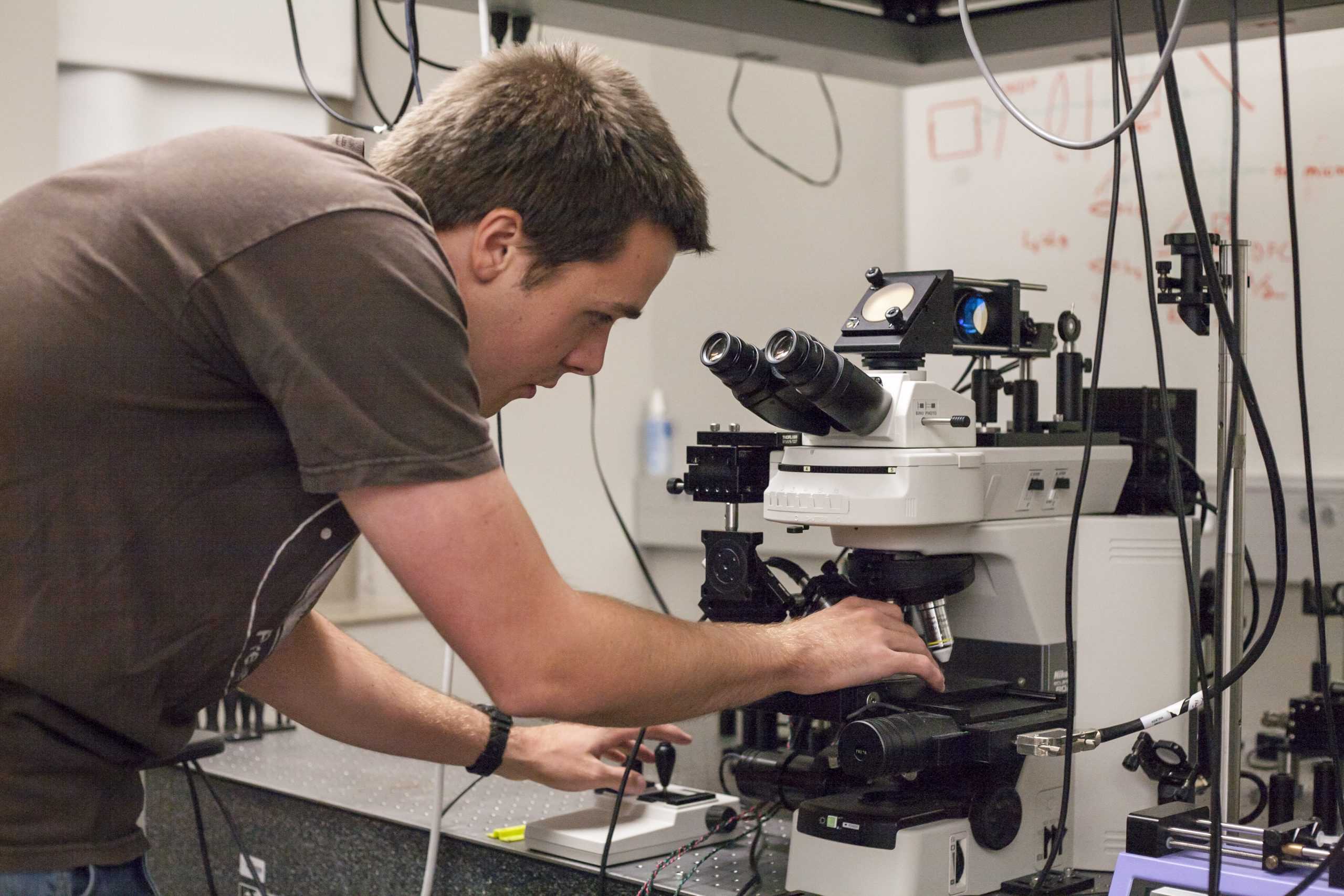It is hard to imagine the sound of light, but a group of A&M researchers hope to do just that — use light as a way to acoustically image previously unseen biological processes.
Brian Applegate, biomedical engineering associate professor and director of the Laboratory for Optical and Molecular Imaging, has developed a technology to see things that are “on the edge of possible.” Called “photoacoustic microscopy,” Applegate and his team shine pulse lasers on molecules, which absorb the light and ultimately convert it into sound that can be turned back into an image.
The work of Applegate and his team may one day allow health researchers to not only see how cells respond to different drugs, but how a cell’s individual components react to the chemicals.
“We are trying look at different types of molecules that aren’t currently possible to look at,” Applegate said.
The photoacoustic effect, which is the principle that the technology is built on, was first discovered by Alexander Graham Bell in the 1880s. While the technology has been vastly improved, Applegate said the effect still works the same way.
“If you shine a pulsed light onto something that can absorb it, it will absorb the energy, and then give off the energy as heat,” Applegate said. “That heat warms up the local tissue and that causes a pressure wave, which is an acoustic wave. If you do this and listen with an ultrasound transducer, it will show up as sound and this is used to identify the things absorbing that light.”
With high-powered microscopes, tiny vessels on the order of several microns can be seen. With electron microscopes, individual atoms can be seen, but some molecules on the subcellular level are still not easily imaged.
“We can specifically target very small molecules that absorb light, and see them very well, with nothing else,” said Scott Mattison, biomedical engineering doctoral student and one of the students in Applegate’s lab.
The A&M team is on the forefront of this technique, and is getting better readings than were previously possible through a process called transient imaging. They are now in the final stages of fine-tuning the process.
“Instead of looking at straight light absorption, we are looking at transient absorption or absorption over time,” Applegate said. “This allows us to get a resolution that is 10 times better than standard techniques.”
Mattison, who plans and runs experiments and oversees equipment maintenance, said the difference this makes in practice is tremendous.
“An analogy could be that we are going from the old SD television to a high-definition television,” Mattison said.
The improved photoacoustic imaging has two main research applications. The first, which is researched in Applegate’s lab, is close monitoring of the activity of the mitochondria, the powerhouse of the cell.
“We are trying to directly image cytochromes, which are subcellular particles in the mitochondria that are used in metabolism,” Applegate said.
If this is accomplished, Mattison said it will have huge implications in pharmaceutical research.
“If everything works how we want it to, we can watch the energy levels of cells change,” Mattison said.
The technique can be used to test how certain drugs affect cells, including the cancer cell. If the energy output of the cancerous cell is known, the efficacy of a cancer treatment can be better understood and improved.
The second application is in the monitoring of blood flow.
The photoacoustic imaging technique is limited by the fact that it can only see light-absorbing particles. Mattison said, fortunately, hemoglobin in the blood is an excellent absorber of light.
Right now, Mattison said research throughout the physics and medical communities uses rats to image different biological processes.
“With photoacoustic imaging, you can look through the rat’s skull and look at its brain activity,” Mattison said. “You can watch where the brain reacts when the rat is subjected to various stimuli.”
Researchers find use in ‘the sound of light’
April 28, 2015
Photo by Tim Lai
Scott Mattison gives a tour of the microscopes he uses which have lasers pulsing at incredible speeds, those lasers are even capable of burning objects.
Donate to The Battalion
Your donation will support the student journalists of Texas A&M University - College Station. Your contribution will allow us to purchase equipment and cover our annual website hosting costs.

















